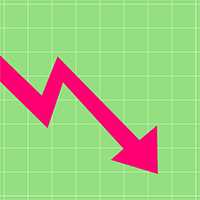Podcast: Play in new window | Download | Embed
Today’s Guest
Welcome to the 11th episode of Smart Brand Marketing with Tom Libelt.
In this session of The Smart Brand Marketing Podcast we go into what can be done when an Ecommerce store loses its traffic or gets hit by a Google algorithm update. Our guest, Brendan Tully, has a successful store himself, runs an agency helping others with marketing and has been paid by the Australian government to coach small business owners.
Fixing Whatever is Wrong with Your E-Commerce Business
Running an e-commerce store is something that requires a lot of dedication and effort. If you do run it right, then your e-commerce store should be raking in a considerable amount of profit for you while also enjoying from a strong staying power in the market.
However, just with any business, an e-commerce store is not free of problems that can cause a severe dip in its sales or worse. As a business owner, it’s your responsibility to find out what it takes to improve on your business. The question, however, is this: where to begin?
Where E-Commerce Businesses Fail a Lot
For most of the time, an e-commerce store fails because of factors within it or, at least, within the owner’s sphere of control and influence. There are a number of pitfalls that e-commerce businesses fall into as well as important matters that their owners fail to account for. Here are some of them:
-
1. Zero Investment

Thanks to platforms like Shopify and Amazon, putting up an e-commerce store is relatively easy. However, the problem here is that many business owners fail to go beyond that level of investment.
For them, an e-commerce store is something that requires less dedication and money and, in turn, is easy to abandon once things are getting bad. If you really want your e-commerce venture to be successful, you should treat it the way you treat any brick and mortar business. In other words, you have to invest a lot of money and effort into it not just in starting the business but also in making it a sustainable venture. -
2. The Website

What not a lot of e-commerce owners know is that their website is an integral part to their strategy. This is why a poorly designed and optimized business website can cause a lot of businesses to fail as it turns off potential customers.
When designing a website, it is important to go beyond mere aesthetics. Not only does a website have to look good, it should be easy to navigate through regardless of what platform or device is used to view it. Try to see if there are things that need to be fixed in your website first like a cluttered layout, long loading times, and other technical issues. Fortunately for you, there are tools out there that can help you build and improve on your business website even if you don’t know any coding language.
-
3. No Niche

Every new e-commerce business is required to quickly establish themselves in the market if they want to be successful in the soonest possible time. However, most business owners do not identify the niche that their e-commerce business can target right from the start.
This leads to many businesses going for that mass appeal approach where the chances of success are relatively low especially if that market is overcrowded. To avoid this, you must identify a very specific segment or niche in that market to target and then expand your business’s reach from there.
Don’t worry. Every e-commerce site out there started with barely nothing and had a relatively small target market. For instance, Amazon just started as a platform to buy and sell books at. Now, it’s one of the largest e-commerce markets that also hosts other smaller businesses.
-
4. No Marketing

Even if you have the best built business models out there, people would not flock to it unless you know how to make its presence known in the market. Most e-commerce business owners think that they can just succeed if they put up their store as people will come by it whenever they search through the web.
That is quite unrealistic as, like any conventional business, your e-commerce store can benefit greatly from a solid marketing plan. First, identify your target market and how to reach out to them. Then, incorporate several online marketing strategies into your plan including content marketing and search engine optimization. Believe it or not, marketing is not as costly online as it is in more traditional markets. So as long as you make it know that your business exists online, people should be aware of it enough to consider dropping by your site to purchase something.
-
5. Impatience

Just because you can put up an e-commerce business within a matter of hours does not mean that results will be seen in just the same period of time. Making your online business as successful as possible will take effort which, in turn, takes time. a lot of business owners fail online because they rush things or are too impatient to let things happen naturally.
You have to build your site’s reputation if you want traffic in it to increase. Also, your business must be consistent enough in providing something of value to customers if you want them coming back for repeat transactions. If you are in the business expecting for quick returns of investment, then e-commerce is probably not for you.
What are the Major E-Commerce Problems and How Can You Fix It?
No matter how well you address the issues above, or avoid them, there is still the chance that your e-commerce store is going to get hit by problems in the middle of your operations. Here are some of them with a few quick solutions:
-
1. Poor Images

It is common practice for buyers to examine a product closely before buying. Since that is not exactly possible online, the next best thing for them is the images that you provide for each product. The only problem, however, is whatever images you are providing is not convincing them of the quality of the products. Maybe the image is too blurry or just covers one angle. Worst, the image does not exactly represent the actual product.
The Solution:
First, take pictures of your product from every angle to give the customer a chance to view each and every side of it. Also, if possible, take a picture of the insides so customers will also have a view of that area of your product.
Next, make sure that the sizing for it is appropriate. If a customer zooms on a thumbnail, the image itself should not blow up to become this pixelated, blurry mess. Instead, what should pop up is a high-quality image. To do this, make sure that the settings of your camera are set to the proper resolution as well as the upload size.
Lastly, avoid using stock images if possible. They give the impression that your products are mediocre. -
2. Slow Speeds

Believe it or not, an online buyer expects to have their transactions completed within 5 minutes. Anything beyond that and the customer gets frustrated to the point that they may just cancel the entire transaction. Slow loading pages are the bane to any e-commerce business as customers have to wait for seconds just for everything to appear on the screen. It doesn’t matter if your products are good. If the pages your site has takes too long to load, customers will be having none of it.
The Solution:
Check the loading speed of your site through a site speed service like Google PageSpeed Insights. These services will tell you which pages are the slowest and where people usually get bottlenecked.
After this, it’s time that you start optimizing your site. Remove all unnecessary scripts from the site while maintaining a presentable layout. Some business owners think that animations are a great way to entice customers but that could work against them if said animation script takes too long to load. The better option is to remove all unnecessary animations from the page while optimizing every essential system in it.
If possible, make sure that every page on your site loads within 2 seconds regardless of the visitor’s Internet speeds.
-
3. Questionable Reviews

The phrase “if it’s too good to be true, then it probably isn’t” comes to mind here. A constant 5-star rating or a 100% average on your business can turn off customers, surprisingly enough.
The reason for this is simple: people online are looking for balanced opinions before making purchase decisions. Anything that does not provide them with such can either be viewed as biased or fake.There is also the practice that some online business owners have of giving reviewers free copies of their products which increases the chances of it having a positive review. Although it might be convincing, some customers are more discerning now and can see through the BS.
The Solution:
Fixing this problem is quite easy: let your customers do the reviews, regardless if they like the product or not. Doing so gives your customers the ability to provide a hopefully honest feedback of your products which you could use to improve on your business. On the flipside, if the reviews are that good, you can use them as a testimonial of sorts to convince other potential customers to try your products out.
And, lastly, never ever write reviews yourself. Manipulating your ratings, if you are caught, can lead to serious repercussions as that is against the policies of most online marketplaces now and the Federal Trade Commission.
As for that practice of reviews of free items, well, some online marketplaces are coming down hard on it by banning such. This means that reviews for products right now are 100% user-generated; at least in theory.
-
4. A Confusing Layout

There are certain unspoken conventions in online shopping that customers expect from your business. At best, your website should follow a layout that closely mirrors the typical online shopping process from browsing, to selection, and to payment.
Problems start appearing, however, if you think you need to be clever with your site’s layout. You might remove or hide behind drop-down windows some important features or you change the layout so much that it repeat visitors get disoriented. Either way, your layout is hard to follow and even harder to complete a transaction in.
The Solution:
Always remember the KISS (Keep it Simple, Stupid!) policy. Don’t try to be clever for cleverness’s sake in designing your website. Put the search bar at a place that the eye can easily locate and provide ways for your customers to reorient themselves if they get lost.
Also, do not set your pages to open in a new tab. Nothing is more frustrating to customers than having to deal with multiple open browsers when buying something from a site.
-
5. Lack of Stocks

In most cases, not showing an accurate level of your available stocks can destroy the credibility of your store. After all, nothing can be more infuriating for a buyer to pay for something, wait for it arrive, and then find out that it won’t be arriving at the expected date since you have still to resupply on the items.
You have to consider that some purchases are made in consideration of the shipping time. for instance, if somebody wants to buy something from you for someone who’s having a birthday, your business’s ability to make sure that that item arrives a few days before that birthday will matter.
The Solution:
It’s simple, really. Don’t advertise for items whose stocks are currently unavailable. The best option here is to use an e-commerce feature that counts down available stocks when it sells to give you an idea as to how many of these products you can ship to waiting customers.
You can also use the limited stocks to your advantage. When people find out that some items are in limited supply, this gives them the motivation to purchase it as soon as possible, allowing you to clear out on your inventory and earn more income.
In Summary
Even if you think that there is nothing wrong with your e-commerce business, should you find ways to fix it? The short answer is yes. There is always room for improvement and, in the case of being competitive in the online world, improvement is what you will need to keep your e-commerce afloat.
Have you encountered problems running your own e-commerce business? What other strategies have you used to address them? The comments section below is always open for discussion.
References:
https://www.forbes.com/sites/michelleevans1/2017/01/24/5-ways-the-internet-of-things-will-influence-commerce/#245008ab4a0f
https://www.whoishostingthis.com/blog/2017/07/27/ecommerce-problems/
https://www.floship.com/e-commerce-fulfillment-problems/
RESOURCES
THANK YOU FOR LISTENING!
To get more SBM content sent directly to your device as they become available, you can subscribe on iTunes or Stitcher!
Also, reviews on iTunes are extremely helpful and greatly appreciated! I read each and every one of them, and feel free to share your URL there so I can contact you later on and say thanks!
If you enjoyed this episode you may also love listening to:
Peter Shankman on Being Nice and Getting Publicity The Easy Way
Life of a Consultant and What it Takes to Create a Successful Podcast with Tim Conley



